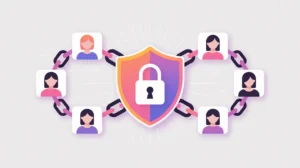Importance of Large Language Models (LLMs)
Large Language Models (LLMs) have become the most visible expression of recent AI progress, capturing attention for their ability to generate text, answer questions, and simulate conversation with surprising fluency. Their importance today lies in how they bring natural language interaction to the forefront of human 6machine collaboration. By scaling up neural network architectures and training on massive datasets, LLMs have created a step change in accessibility, making advanced AI usable through everyday language.
For social innovation and international development, LLMs matter because they lower barriers to digital participation. Rather than requiring technical expertise, these models allow people to query information, draft documents, or design solutions by typing or speaking in their own words. This unlocks new possibilities for organizations that often operate with limited staff, resources, or technical infrastructure.
Definition and Key Features
Large Language Models are a class of deep learning systems trained on vast amounts of text data to predict and generate sequences of words. They rely on transformer architectures, introduced in 2017, which use attention mechanisms to capture long-range dependencies in language. Training requires billions or even trillions of parameters, enabling the model to internalize a wide range of linguistic patterns, styles, and contexts.
LLMs are not general intelligence, though their outputs may appear human-like. Nor are they flawless sources of truth; they generate text based on statistical probability, which can lead to errors, hallucinations, or bias. Their scale distinguishes them from earlier NLP systems, which were trained on narrower datasets and built for more limited tasks such as translation or sentiment analysis.
How this Works in Practice
In practice, LLMs process input text (prompts) and generate responses by predicting the most likely next word. This seemingly simple mechanism allows for flexible applications, from summarization and translation to code generation and dialogue. The models can be fine-tuned with domain-specific data to improve performance in areas such as healthcare, law, or education. They can also be aligned with human preferences through reinforcement learning from human feedback, which helps reduce harmful or irrelevant outputs.
The strength of LLMs lies in their generality and adaptability. A single model can perform multiple tasks that previously required separate systems. However, their reliance on large-scale data and compute makes them difficult to build from scratch, concentrating development capacity in a handful of institutions. Their outputs are also shaped by the biases and gaps in the training data, requiring careful evaluation and contextual adaptation when used in sensitive domains.
Implications for Social Innovators
LLMs are already reshaping mission-driven work. Nonprofits use them to draft grant proposals, reports, and communications, reducing administrative burdens. Educators adapt them as tutoring companions, creating interactive learning experiences that adjust to student questions. Health organizations are exploring LLMs to summarize patient histories or translate medical information into plain language for communities with low literacy levels.
In humanitarian response, LLMs help process large volumes of field reports, identifying trends or urgent needs that require attention. Civil society groups apply them to analyze policy documents and legislation, accelerating advocacy efforts. Yet the risks are also real: hallucinated information could mislead practitioners, and language coverage gaps could exclude certain populations. For social innovation and international development, the priority is to use LLMs as augmentative tools, pairing them with local expertise and oversight to ensure accuracy, inclusivity, and trustworthiness.







